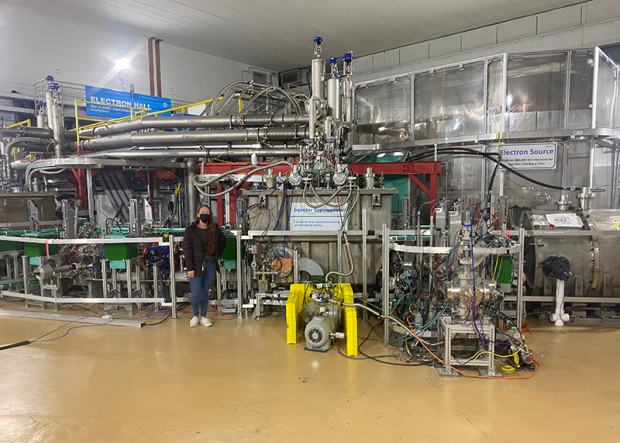What if radiation therapy for cancerous tumors could be completed in a fraction of a second instead of over the course of several weeks?
That’s the goal of a newly developing technique called FLASH which uses up to 1000 times the dosage per second of conventional radiation. SDSU medical physics master’s Dayna Latney (’19) is teasing out how this kind of treatment works within solid tumors so it can move toward clinical trials in humans.
In partnership with Canada’s particle accelerator center, TRIUMF, and Genesis Healthcare Partners, Latney is comparing the percent of DNA strands that break after different doses of FLASH and conventional radiation therapy. Some DNA samples were treated using TRIUMF’s linear accelerator, which is capable of much higher energies and doses of radiation than typical clinics.
“I really like being able to blend physics and biology,” said Latney. “And at the same time, it’s something that’s productive for society.”
Latney was invited to present her findings at TRIUMF this spring and summer as part of the center’s Science Week.
“It was nerve-wracking, intimidating and a lot of fun,” she said. “It was very cool to be listed alongside other scientists.”
Latney is finishing up her final analyses in anticipation of graduating this fall. Her advisor, physics professor Mauro Tambasco, published a paper earlier this year that quantified DNA strand breaks resulting from just three dose rates.


